John Hurrell – 23 October, 2014
The T-shape, cross formation here is ubiquitous, sometimes with spiderlike radiating rods, or hanging clusters of parallel strips. As twisting or emerging beams, or swinging bars, they have a latent energy that usually restlessly rotates around a static centre - a fixed core. As activating (traversing) vectors in space they are energised by a thin organic paint application, and by the work's negative spaces and shadows on the wall.
Twenty-seven works, only four being conventional rectangular planes, make up this very interesting Garcia-Alvarez exhibition. Most are ‘stick reliefs’, projecting wall sculpture made out of carefully positioned, shrewdly painted batons. Continually developed since the mid-seventies, they look rough but ‘raw’ is more accurate to describe their aesthetic. These skeletal angular forms initially seem rushed, but the more you study them and start analysing their vectors, planar alignments and dribbly accentuations with thin paint, the more you realise these timber ‘crosses’ have been looked at, fine tuned and developed over a long period.
It is exciting to see this unusual variety of relief painting, though the show in parts suffers badly from overcrowding. The McCahonesque canvas works - terrific though they are - should have been left in the studio to be brought out another day, and a third of the reliefs hung in Melville’s office instead of the gallery.
Garcia-Alvarez’s wall ‘sculptures’ are rich in associations. They are crosslike, but also like the turning hands of a clock, or high-kicking stick figures. As a form of linear and spatial research they are long-distance cousins to the works of John Panting, Kenneth Martin and Pasmore-influenced Don Peebles, or more recently Anthony Gormley and Rose Nolan. Yet because they are so frontal they are clearly paintings, despite their sculptural support being a form of drawing in space hovering over a wall, and having sideways nuances.
As ‘abstractions’ these are not motivated by narrative but by visual (formal) wit, teasing the viewer by undermining anticipated expectations in terms of aligned vectors, contrasting thicknesses, sudden slivers of colour, batons apparently balancing on fulcrums of single edges, and planar ambiguities.
The T-shaped, cross formation here is ubiquitous, sometimes with spiderlike radiating rods, or hanging clusters of parallel strips. As twisting or emerging ‘beams’, or swinging bars, they have a latent energy that restlessly rotates around a static centre - a fixed core. As activating (traversing) vectors in space they are energised by a thin organic paint application, and by the work’s negative spaces and shadows on the wall.
There is a lot to ponder over with so many variations presented in concentration, but oddly, because of the inconsistent spacing, the natty little book of illustrations Melville has published helps compensate. There you can see certain key works photographed in isolation. Useful though it may be, obviously you still need to see the work firsthand, to witness directly in the gallery formalism in its best sense: unpredictable yet with method, energetic but controlled; sublimely inventive.
John Hurrell
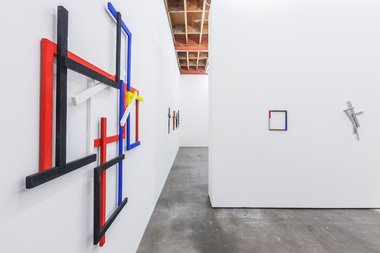
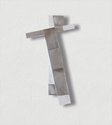
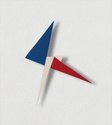
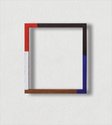
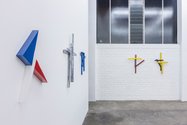
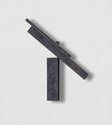
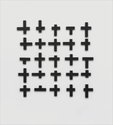
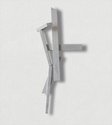
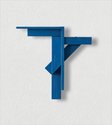
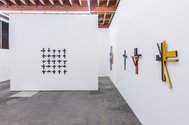
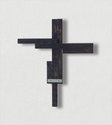
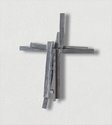
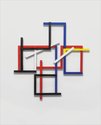
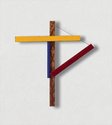
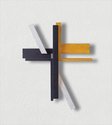
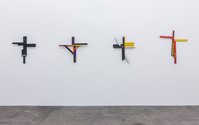
 Two Rooms presents a program of residencies and projects
Two Rooms presents a program of residencies and projects Advertising in this column
Advertising in this column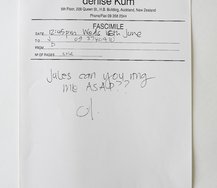
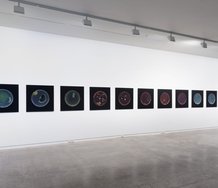
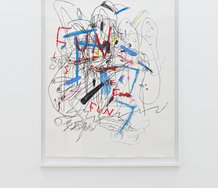

This Discussion has 0 comments.
Comment
Participate
Register to Participate.
Sign in
Sign in to an existing account.